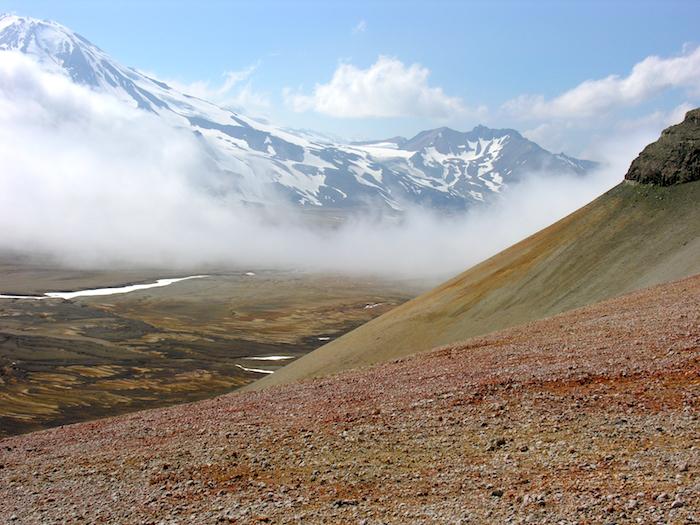
In the Valley of Ten Thousand Smokes, explorers encounter many unexpected joys, including beautiful colors of volcanic ash/NPS
The nation’s fourth largest national park, Katmai celebrates its 100th birthday this year. “The Geologic Story of Katmai,” the first in a series of special centennial events, takes place Saturday, April 28, at Lucy Cuddy Hall at the University of Alaska Anchorage, from 10 a.m. to 3 p.m.
“The Geologic Story of Katmai” will include presentations by Loren Anderson, director of cultural programs at the Alaska Native Heritage Center; Pavel Izbekov, Ph.D., of the Geophysical Institute at the University of Alaska Fairbanks; Michelle Coombs, Ph.D., of the Alaska Volcano Observatory; and Chad Hults, Ph.D., of the National Park Service. There will also be performances by Anchorage’s Sugpiaq Dance Group. Food and beverages will be provided throughout the day; admission is free and all are invited.
Katmai is located in southwest Alaska, at the base of the Alaska Peninsula. The park was originally established as a national monument in 1918 to preserve the landscape associated with the 1912 volcanic eruption of Novarupta, which turned out to be the largest eruption in the world during the 20th century. Despite its magnitude, there were no fatalities associated with the eruption thanks to the area’s low population density. However, the people of nearby villages Katmai and Savonoski were forced to evacuate. Their former homesites are now part of the park.

Novarupta’s pyroclastic flows—fast-moving, violent avalanches of searing hot lava, ash, and gas—completely reshaped the valley of the Ukak River. In 1916, botanist and National Geographic explorer Robert F. Griggs dubbed the volcanically devastated region “the Valley of Ten Thousand Smokes” for the steaming fumaroles that dotted the landscape. President Woodrow Wilson proclaimed Katmai a national monument two years later.
Though the fumaroles have faded with time, the wonders of the Valley of Ten Thousand Smokes and Katmai’s 14 other active volcanoes continue to inspire intrepid travelers today. Other visitors come to experience world-class fishing, explore a vast wilderness, or learn about the long cultural history of the region. However, today, Katmai is most well-known for the world-class bear viewing opportunities along the Brooks River, brought to the world through the Explore.org Bearcam. About 38,000 people per year visit the park, which is accessible only by plane or boat, but millions more enjoy watching the bears of Brooks River on the Bearcam.
For the park centennial, Katmai invites anyone who has been touched by the wonders of the park to share their story on social media using the hashtag #Katmai100. Photos, videos, and park-inspired artwork may be reposted to Katmai’s official social media outlets.
Katmai’s centennial logo combines retro and modern design to reference the volcanic roots of the national park and preserve, while acknowledging the wildlife, plants, and cultural traditions of the Alaska Native peoples who have dwelled on this landscape for thousands of years.
“The Geologic Story of Katmai” and other centennial events are made possible through the support of the Katmai Conservancy, Explore.org and the Annenberg Foundation, Alaska Geographic, University of Alaska Anchorage, University of Alaska Fairbanks, Alaska Volcano Observatory, Alaska Native Heritage Center, and the students of the Bristol Bay School District.
For more information about Katmai centennial celebrations, please visit the park’s centennial web page.



Add comment